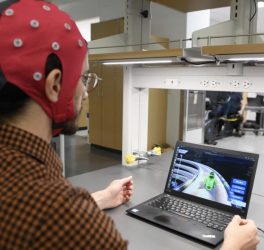
GoodMaps is collaborating with Intel to deliver indoor wayfinding solution for all, with special emphasis on improving indoor navigation for people with vision, mobility, and hearing disabilities.
Over the past few months, GoodMaps and Portland State University have worked together to implement the GoodMaps system in the Smith Student Union.
The goal is to expand the accessibility of campus buildings and improve the student experience. Students with vision disabilities often receive only basic orientation and mobility upon arriving on campus. This is likely not to be repeated each semester when their class schedule and navigation changes. With the power of GoodMaps, PSU students who are blind or low vision, mobility, or just new to campus, can easily and confidently navigate using the GoodMaps Explore app.
Some of these R&D vectors include:
- LiDAR and robot-based digitalization technologies to improve the point cloud acquisition process for high-resolution, fast and efficient indoor mapping
- AI Cloud Services to host global and dynamic positioning inference models via optimized workflows on Intel XPUs
- Real-time object detection and path planning delivering optimal navigation experiences
- Binaural spatial audio for virtual and real-time navigation
The next generation of indoor high-resolution 3D maps will create extraordinary technological capabilities critical to empower a wide spectrum of human-centric and machine-based services. From human assistance during wayfinding, to smart infrastructure and multipurpose service robotics, these technologies will exploit scalable high-resolution semantic maps to solve complex tasks in dynamic environments through AI and cloud-computing capabilities. Intel is investing, researching, and developing the key hardware and software enablers to democratize these technologies significantly improving the lives of all humans on earth.








